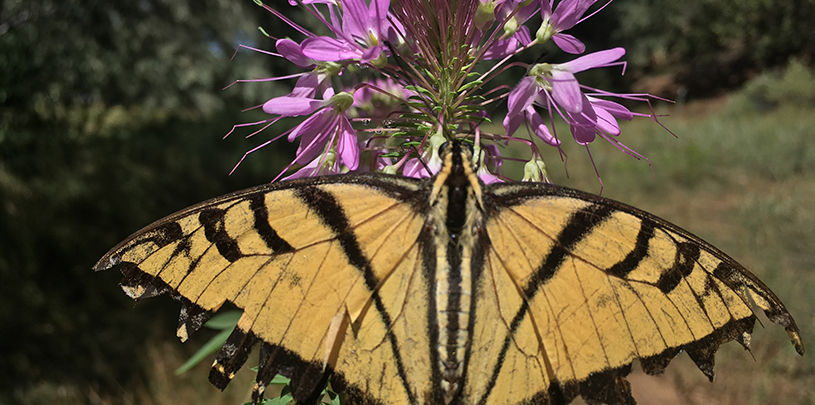
 by Lisa Winters, Research and Stewardship Volunteer Coordinator
by Lisa Winters, Research and Stewardship Volunteer Coordinator
This isn’t meant to be a trick question. In the West, livestock graze on about 230 million acres of our public lands — across barren redrock in southern Utah, ponderosa forests in northern Arizona, and sagebrush flats in western Colorado. So, it can be hard to imagine what the land would look like without cows and their bottomless appetites.
Closely cropped green grass, a lone flowering plant, fields of sagebrush as far as the eye can see. All of these cues lead us to believe this is what the West should look like. Hollywood has cast a barren landscape, and it’s what we’ve come to expect when we imagine what lies beyond the 100th meridian.
But I’m here to say, it doesn’t have to be that way.
Without thousand-pound animals munching, crunching, and nibbling their day away, vegetation has a chance to grow. Native grasses sprout up between sagebrush, giving cover to small mammals and insects. Cattails and aquatic plants thrive near water sources, shading riverbanks and keeping water cool for fish and other organisms. Plants grow tall and burst forth with showy blooms, drawing native pollinators like bees and butterflies.
“Lush” takes on a whole new meaning when we see what can happen on these landscapes.
It’s up to us to not become complacent with what we see — to not accept less than what our grasslands, deserts, and forests can be.
We’ve recently launched a grazing project to hone in on where we can rest lands, restore water sources, and influence policies on public lands grazing.
 Volunteers discuss the differences in vegetation on both sides of a fenced area on the Mogollon Rim in Arizona.
Volunteers discuss the differences in vegetation on both sides of a fenced area on the Mogollon Rim in Arizona.
If you’re interested in practicing your observation skills, exploring new parts of the Colorado Plateau, or want to see how land recovers without cows — let us know! We’re looking for people comfortable and willing to trek to a few different places, both grazed and formally closed to grazing, to take photographs and document conditions on the land.
We’ll provide you with the maps, training, and datasheets you need to get the job done. You’ll help us bring awareness to public-lands grazing, document the few precious areas thriving without cattle, and hopefully change the way agencies manage grazed lands.
No prior skills required, just a desire to help and the ability to independently navigate backroads and collect information.
As 2024 draws to a close, we look back at five maps we created this year that give us hope for 2025.
Read MoreThe federal government will determine if the charismatic blue bird should be listed as threatened or endangered.
Read MoreWe can’t wait to meet you in a canyon, along a creek, or in the high alpine meadows of the Colorado Plateau.
Read More